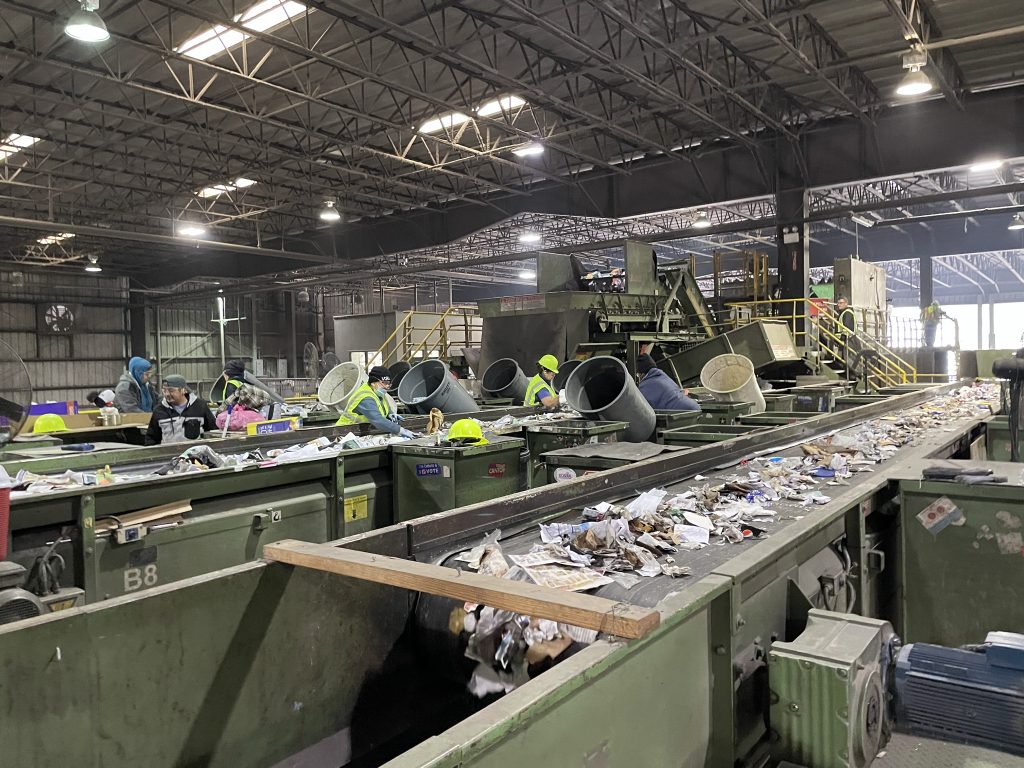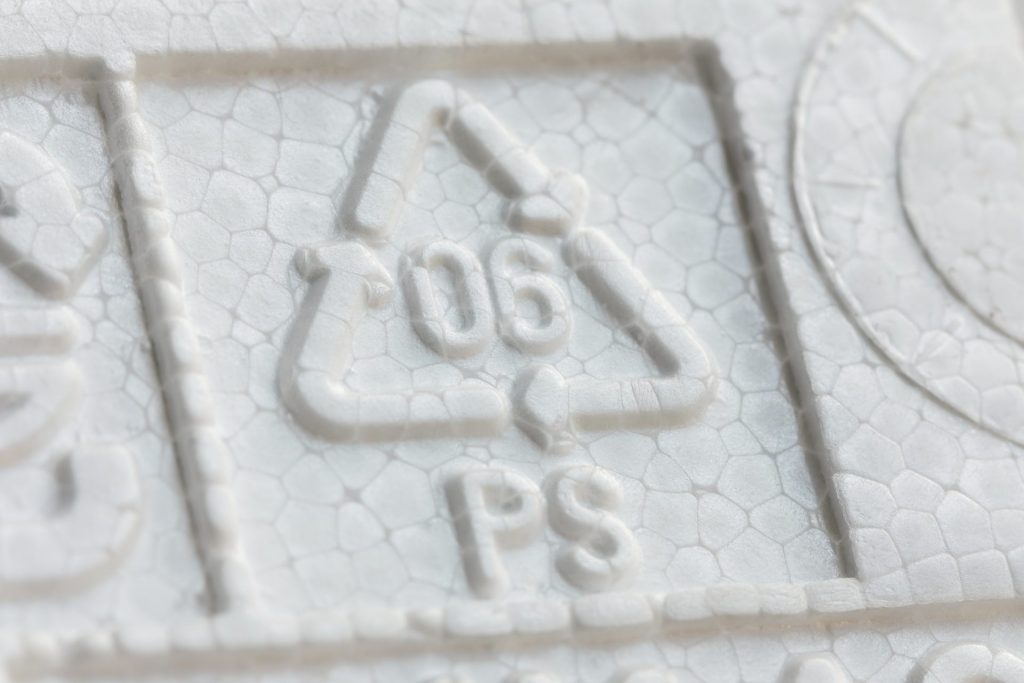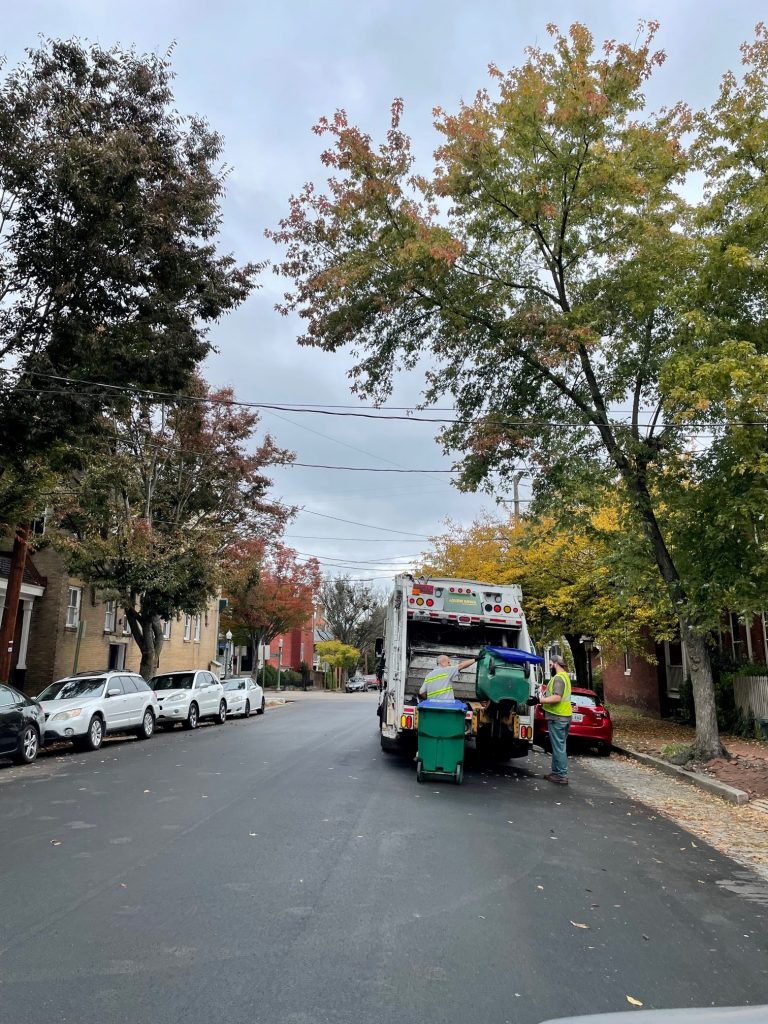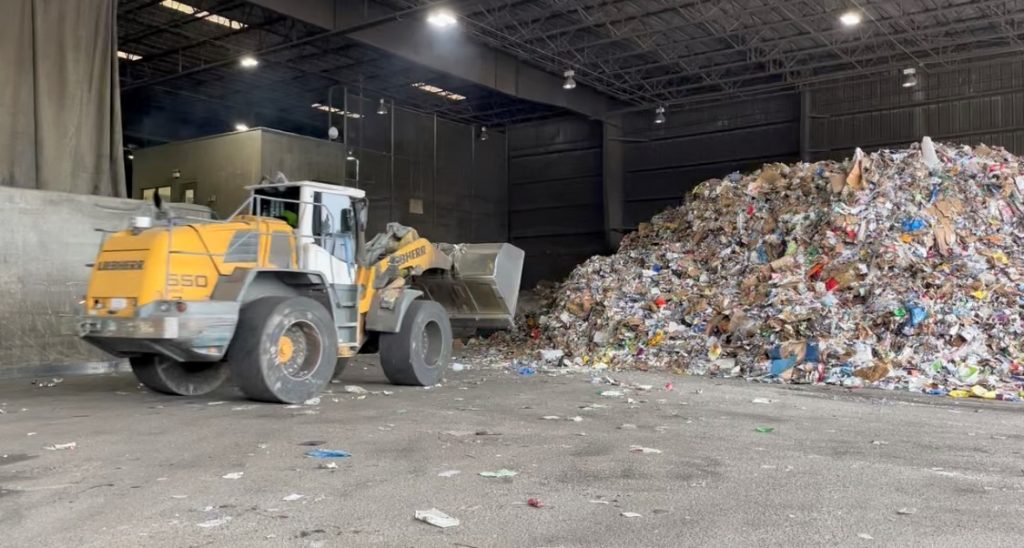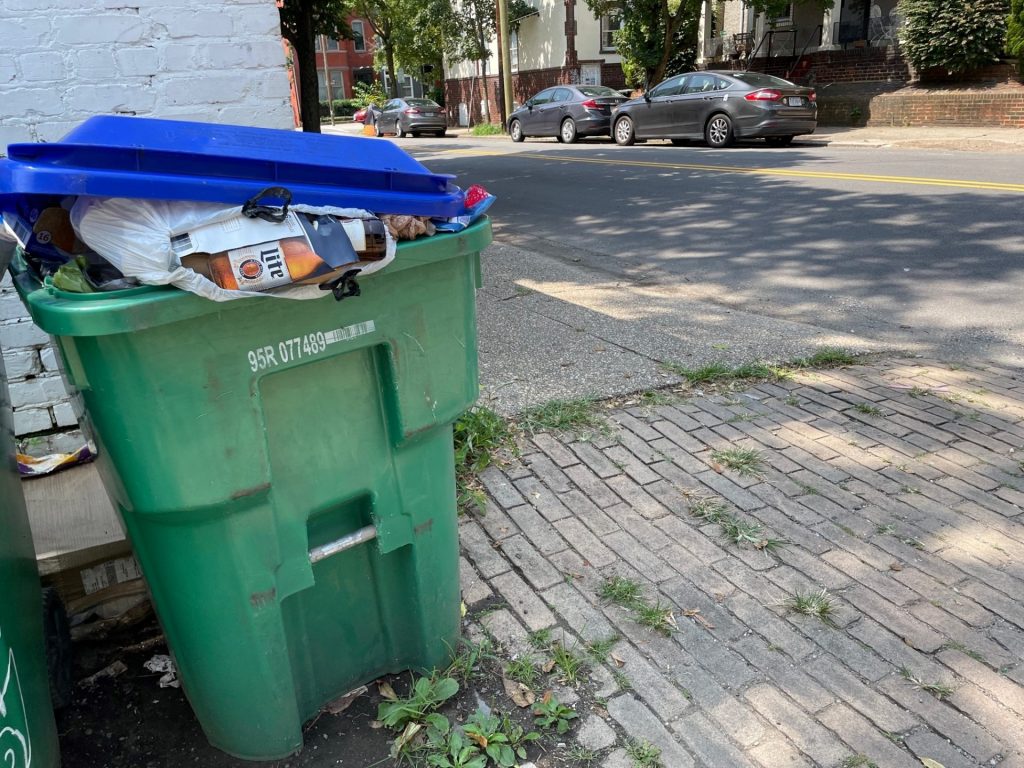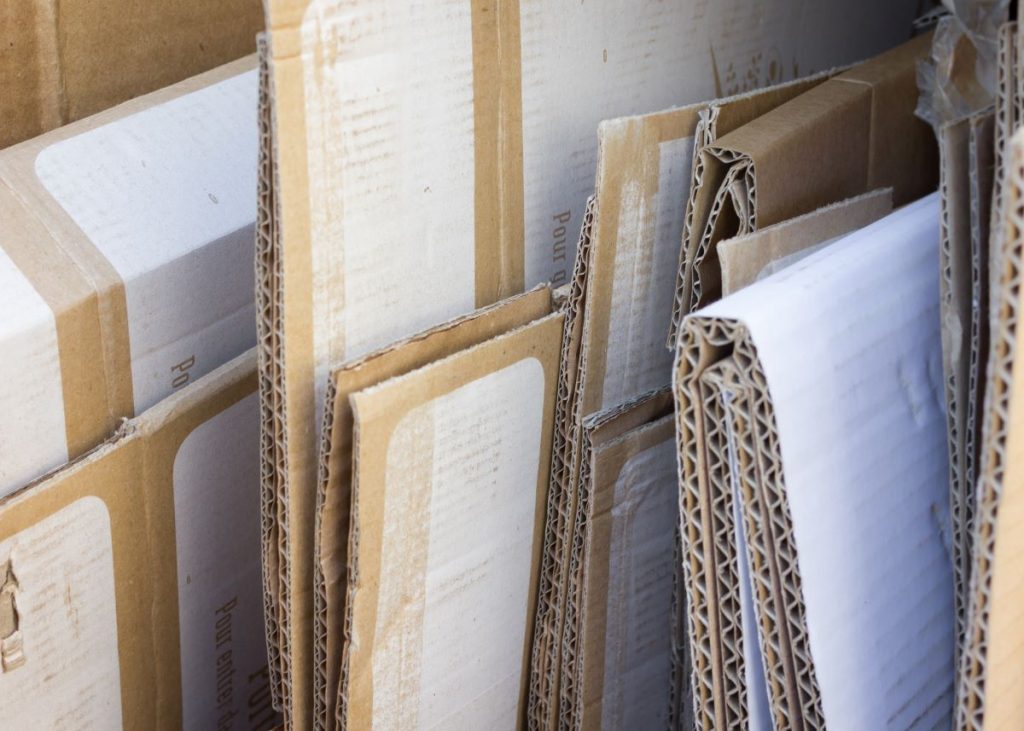What Happens to Richmond’s Recycling? Debunking Myths on America Recycles Day
November 13, 2023 |
Elizabeth Hall represents the City of Richmond on the CVWMA Board of Directors. This article was part of a series that appeared on RVAHub.
The recycling process is regional, complex and evolving, sometimes making it hard for regular Richmond residents to confidently understand. Today, we’ll tackle some common questions and myths associated with our local recycling program.
As a kid growing up in the 80s and 90s, I felt pretty confident that I had all the information I needed to make environmentally conscious choices. Colorful educational groups visited my elementary school each year to chronicle the benefits of adopting environmental habits, explain the foundations of the recycling process, and teach children about the ubiquitous three R’s — reduce, reuse, recycle.
So, by the end of elementary school, I thought I had a pretty good handle on the whole process. I knew I could conserve water by turning off the tap while brushing my teeth … save electricity by closing windows, switching the lights off when I left a room … and reducing landfill trash by ensuring my family recycled bottles, cans, jars, and plastics. These materials somehow transformed into new reusable products through the magic of modern technological innovation. I knew this was what happened … but how did it happen?
The recycling process is regional, complex, and evolving, sometimes making it hard for regular Richmond residents to confidently understand. The list of materials accepted for recycling differs among national regions. That means your friends or family in different states or regions will be sorting their recycling under different guidelines. Each locality will offer recycling services based on its capacity and manufacturers’ ability to buy recycled goods. Adding to the national vs. regional confusion, manufacturers often label products as recyclable that local service providers are not in practice equipped to accept.
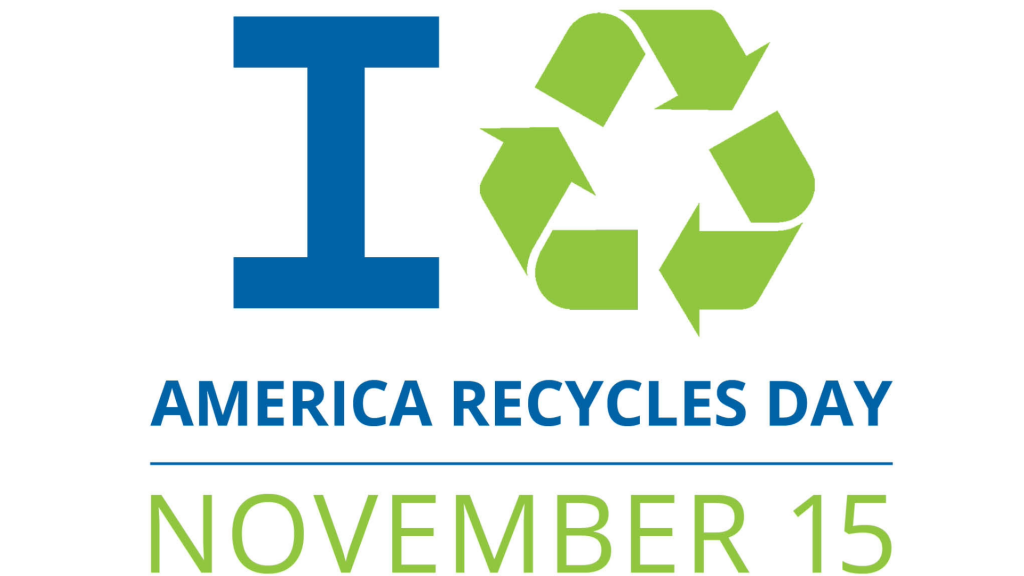 And, perhaps the biggest issue of all, the recycling industry has taken some challenging public relations hits in recent years. We’ve all heard about reports of recycling going into landfills. So, while most of us know we should recycle, and many of us do recycle, most of us aren’t totally sure what happens to that recycling or if it’s being remanufactured in the way we hope. While I can’t speak to the national and global recycling industry, as a Central Virginia Waste Management Authority (CVWMA) board member, I can help better explain our local recycling process and the regional benefits we can reap with consumer participation.
And, perhaps the biggest issue of all, the recycling industry has taken some challenging public relations hits in recent years. We’ve all heard about reports of recycling going into landfills. So, while most of us know we should recycle, and many of us do recycle, most of us aren’t totally sure what happens to that recycling or if it’s being remanufactured in the way we hope. While I can’t speak to the national and global recycling industry, as a Central Virginia Waste Management Authority (CVWMA) board member, I can help better explain our local recycling process and the regional benefits we can reap with consumer participation.
So, in honor of America Recycles Day on November 15th, let’s answer some questions and debunk some myths about what happens to our recycling in Richmond.
Question 1: Where does my recycling go once it’s been picked up?
CVWMA coordinates recycling for Richmond and 10 other local jurisdictions. It provides this service by contracting with TFC Recycling, which owns and operates a Materials Recovery Facility — or MRF — in Chester, Virginia.
TFC haulers collect our recycling directly from our homes via the residential recycling program or from the designated dropoff sites throughout the city. They transport our mixed recyclable materials to the MRF in Chester, where the sorting process begins. The CVWMA board toured the facility last Spring, where a company guide walked us through the materials process. The MRF plant only processes recycling. No other waste materials are handled within that facility.
Question 2: How is my recycling sorted?
While the TFC warehouse is filled with front-loader trucks, layered conveyor belts, and various machinery, much of the sorting is done by workers, who manage many of the processes by hand. There are about 75-80 employees who work in the plant, covering two shifts per day and operating 5-to-6 days a week.
The sorting process begins by pulling out non-recyclable items and cardboard, which is lighter than the other mixed materials and can largely be skimmed off the top. Next, mixed paper is separated out and sorted by weight. Magnets are then used to lift off steel and tin cans, and another machine with a rare-earth magnet separates the aluminum.
Plastic is then sorted out by workers based on size and type. To demonstrate, along the plastics portion of the conveyor belt, one worker focuses exclusively on grabbing gallon (milk) jugs from the belt and tossing them into a nearby bin. Another worker on that line grabs laundry detergent containers and a third works on soda bottles. Each of these team members can grab between 60 and 90 pieces of plastic per minute.
At the end, glass and everything else falls through. The glass is shipped to a facility where it is further sorted by color and cleaned.
Question 3: How are the materials recycled?
At the MRF, all materials that can be recycled are condensed into bails for transport. Then, they’re sold and shipped to buyers. This is the start of their journey to become a new product. That journey is different for each type of material. For example, most cardboard and paper still travels overseas, while plastic, aluminum, steel, and glass stay within the U.S. and Canada. According to the TFC tour guide, some plastic bottles are sent to locations as nearby as Norfolk and North Carolina.
Cardboard — which has become increasingly prevalent as a recycled commodity since the pandemic altered American shopping habits — can be recycled up to 7 times. Mixed paper becomes power towels and toilet paper. You’ve probably heard that aluminum is infinitely recyclable, and that’s true. Aluminum cans are converted back to new aluminum cans, which can be back on store shelves in as little as 60 days.
Plastic can become part of a variety of new products. In fact, CVWMA’s new recycling carts in Hanover, Henrico, and Goochland were constructed using 10% post-consumer plastic from our own local recycling stream (ie, bottles, tubs, and containers). That means our local recycling was used to build new recycling carts that are used back in our local communities.
Myth 1: My recycling just goes in the landfill.
This myth is perpetuated at two points. One point is at the recycling cart. Residents sometimes report seeing city trash trucks picking up recycling carts. That’s sometimes true. Sometimes, CVWMA recycling carts become contaminated with trash and, therefore, can’t be collected by TFC without contaminating the truck’s recycling load. Suppose residents don’t resolve the issue by cleaning trash or non-recyclable items from the recycling cart. In that case, CVWMA will ask the Department of Public Works to empty that cart so when residents see DPW trash trucks emptying recycling carts, it is so contaminated that any recyclable items within it can no longer be processed. It is now essentially a trash bin, and the city’s trash service helps CVWMA manage it by picking up that trash.
Similarly, if your recycling contains trash that contaminates the recyclable products, there is a chance that the recyclable products will also have to be landfilled due to contamination. This is why it’s so important for all Richmond recyclers to only put recyclable materials into their carts— if you’re not sure, don’t include it — and to keep their carts free from food waste and trash.
The other place this myth comes up is after recycling is picked up. Some people wonder if that recycling “just goes to a landfill.” As we saw above, Richmond’s recycling goes to a local MRF just down the road in Chester. The majority of the materials processed at the MRF must go to reprocessing facilities in order for TCF to maintain its certification and receive tax rebates. So, the facility would not be able to continue operating as an MRF if it landfilled most of its materials.
TFC is permitted as a recycling facility and, as such, invests millions of dollars in sorting equipment and personnel to do just that: recycle. TFC does not own a landfill or other solid waste facility, so any non-recyclables they receive have to be disposed of at a cost.
Myth 2: Recycling has no economic value.
Recycling helps keep our trash costs in check. Our sorted recycling is sold to buyers to make new products. The sale of these recyclable goods creates an additional revenue source that helps offset processing and collection costs. Those offsets, in turn, help keep consumer costs lower — and ultimately make recycling cheaper for consumers when compared to landfilling solid waste.
The economic value of these materials is also apparent on the open market, where TFC sells our recyclables. For example, the price of used cardboard is rising this Fall — a seasonal economic trend CVWMA usually observes ahead of the U.S. holiday season each year.
The circular economy also supports the U.S. workforce. According to a 2020 Environmental Protection Agency (EPA) economic report, the recycling industry accounts for 681,000 jobs and $37.8 billion in wages, which the agency equates to “1.17 jobs for every 1,000 tons of materials recycled.” The report accounts for jobs that directly support recycling and for jobs higher up the supply chain.
Remember, our plastic, steel, aluminum, and glass are recycled here in North America, with many of those businesses located in Virginia or nearby states. So, our local recycling efforts help support our local economy.
Myth 3: Recycling is a waste of time.
Taking a little extra time to rinse and sort your recycling may have a broader environmental impact than you think. For starters, recycling helps divert waste that would otherwise be landfilled. Over the last fiscal year, Richmond City residents alone recycled 9,348 tons via the curbside recycling program. That tonnage directly equates to landfill diversion. That’s tons of recycling that’s not going into our local landfills.
Plus, the more that we produce new goods from recycled materials, the less that we have to mine raw materials (think: trees, water, and minerals). According to the EPA, one ton of recycled paper can save 17 mature trees, and 75% of all aluminum ever produced is still in use today. Those are tangible natural resources that we know we can help conserve through our individual recycling efforts.
Have more questions or would like more information about how your local recycling impacts our community? Email info@cvwma.com or send a message on Facebook or Instagram.
Tags: america recycles day, circular economy, city of richmond, cvwma, elizabeth hall, recycling, tfc recyclingCategory: Richmond

